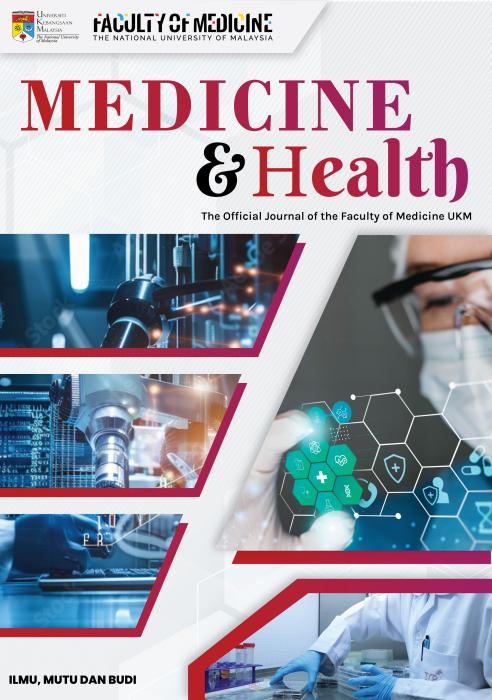Expression of p53 Protein in Premenopausal Women as Risk Factors for Breast Cancer
Expression of p53 Protein in Women within the Premenopausal Age
Abstract
Mutation is known to occur before the development of various types of cancers. Mutation in p53 gene can be found in human breast cancer. The aim of the present study was to determine the correlation between p53 protein expressions with women in premenopausal age. A total of 111 breast cancer tissues were examined for p53 protein expression by IHC. The results showed that majority (36.9%; n=41/111) who were more than 41 yrs, overexpressed positive p53 (+) protein category and 2.7% (n=3/111) aged 41 yrs and less, showed less positive p53 (+) protein category. However, the Fishers exact test, indicated that, there was no significant correlation between participant’s age group with p53 protein category (χ2 (1) = 0.78; p =0.52) and no correlation strength was indicated (Cramer’s V coefficient = 0.08; p =0.37), respectively. The risk estimate showed probability of p53 (+) protein being overexpressed in the age group < 41 yrs was 0.66 times less likely compared to the age group > 41 yrs. In conclusion, with or without overexpression of p53 protein, women above 41 yrs were found to have greater risk.
Keywords :
age,
Breast cancer,
expression,
p53 protein,
premenopausal,
women,
Abstrak
Mutasi telah di kenal pasti berlaku sebelum pembentukan pelbagai jenis kanser. Mutasi di dalam gen p53 boleh di jumpai dalam kanser payudara. Objektif kajian ini adalah untuk menentukan korelasi antara protein p53 dengan wanita dalam usia pra-menopaus. Sebanyak 111 tisu kanser payudara telah dikaji untuk ekspresi protein p53 oleh (Immunohistochemistry) ‘IHC’. Hasil kajian mendapati majoriti 36.9.% (n = 41/111) wanita berumur 41 tahun ke atas yang menghidap kanser payudara ekspress lebih p53 protein positif (+) dan hanya 2.7% (n = 3/111) bawah 41 tahun ekspress protein p53 positif (+) berlebihan. Walau bagaimanapun, ujian Fishers Exact menunjukkan bahawa, terdapat hubungan yang tidak signifikan antara kumpulan umur peserta dengan kategori protein p53 (χ2 (1) = 0.78; p = 0.52); Cramer’s V = 0.08; p = 0.37). Anggaran risiko menunjukkan kebarangkalian ekspresi protein p53 (+) yang melampau dalam kumpulan yang berusia bawah daripada 41 tahun adalah 0.66 kali lebih kurang berbanding kumpulan wanita yang berusia 41 tahun ke atas. Kesimpulannya, dengan atau tanpa ekspresi protein p53 yang melampau, wanita yang berusia lebih daripada 41 tahun mempunyai risiko yang lebih besar untuk menghidap kanser payudara.
Kata Kunci :
ekspresi protein p53,
Kanser payudara,
pra menopaus,
umur,
wanita,
Correspondance Address
Wan Mazlina Md Saad, Medical Laboratory Technology Lecturer, Faculty of Health Sciences, Universiti Teknologi MARA (UiTM), Puncak Alam Campus, 42300, Selangor, Malaysia. Tel: +603-32584311 Fax: +603-32584599 E-mail: wanmaz755@salam.uitm.edu.my








